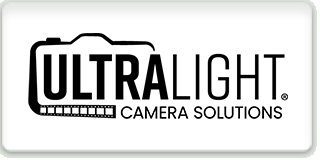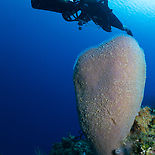GEAR TESTS: Panasonic Lumix-GX1
 |
Sterling Zumbrunn Chief Technical Officer  |
The Panasonic GX1 was a sleeper hit of the Shootout. Panasonic is not exactly well-known among the underwater camera market in the US, but they make some awesome mirrorless cameras that are beloved by serious enthusiasts for their manual controls, robust build quality, and excellent lens selection. Nauticam USA was kind enough to bring their camera along with a host of lenses and their NA-GX1 housing. Our guests were taking it out every day and coming back with great results, so when it was free one morning I decided to jump at the chance to give it try.
I was impressed with the NA-GX1's diminutive size and ease of handling. All controls were clearly laid out and easily accessible, with the most important ones reachable with one hand. The image quality Panasonic's camera delivers is impressive, and you can't go wrong with the optics available for the Micro 4/3 platform. My personal favorite is the Panasonic 8mm fisheye which is an extremely sharp lens, and when combined with Nauticam's mini-dome, I was able to get within a couple inches of my subjects to shoot these photos. The NA-GX1 is the type of system that a beginner can get up and running in minutes, but it also has good enough image quality for a pro to keep as a backup rig for those moments when the whale shark appears and you need to jump in the water and swim like crazy to catch up with it. It's really nice to have such a small rig that still maintains exceptional image quality for those blue water chase encounters.
I used manual mode on the camera, and even though the camera only features a single dial, I found it really easy to adjust both shutter speed and aperture. Even with just a single Sea & Sea YS-01 strobe, I was able to get some pleasing results. The TTL flash exposure on the camera was extremely accurate.
All in all, the NA-GX1 is an impressive little rig - one I wouldn't hesitate to recommend to a new shooter, or to anyone looking to upgrade from a point and shoot who is wanting something smaller than an SLR.
 |
Chris Parsons Sales Manager  |
When we give out demo gear at events like the Digital Shootout, we don't hand the system off and tell people "good luck!". We do try to take the time to explain the basics of the camera, show them how to turn the camera and strobes on, change settings, and establish some settings that are a good starting point for the types of shooting and conditions they may encounter. Sometimes, though, we have to do this in a very short amount of time... after all, we need 60 seconds to eat breakfast and get our own gear ready to go diving. As I mentioned in an earlier post, we also put these systems through the wringer... lots of new hands on them, diving everyday, changing lenses nearly every dive, quickly changing batteries, and the occasional rough boat ride out the channel.
The Panasonic GX1 doesn't get a lot of press in the US, as compared to some other brands, but over the course of the week, I was struck by how quietly competent the GX1 is. It is easy to use - hence my discussion above about telling people how to use it. Among the mid range cameras, I found the GX1 the easiest to show people, and my impression is that these people who had never shot a camera before, came back with great images. Everyone who shot it got "keepers" on their first dive with it. There's more to a camera than simplicity though; simplicity doesn't suffice if image quality or performance suffers. But that is where the GX1 in the NA-GX1 is so brilliant... shooting performance is great, and the image quality rivals SLRs at 3 times its price.
READ MORE GEAR TESTS:



































